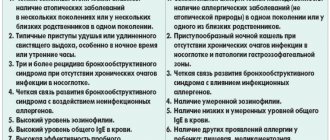Description of the drug TERAFLU
Paracetamol
Enhances the effects of MAO inhibitors, sedatives, ethanol.
The risk of hepatotoxic action of paracetamol increases with simultaneous use of barbiturates, phenytoin, phenobarbital, carbamazepine, rifampicin, isoniazid, zidovudine and other inducers of microsomal liver enzymes.
With long-term regular use of paracetamol, the anticoagulant effect of warfarin and other coumarins may be enhanced, and the risk of bleeding increases. A single use of paracetamol does not have a significant effect.
Metoclopramide increases the rate of absorption of paracetamol and reduces the time to reach its Cmax in the blood plasma. Likewise, domperidone may increase the rate of absorption of paracetamol.
Paracetamol may lead to an increase in T1/2 of chloramphenicol.
Paracetamol can reduce the bioavailability of lamotrigine, which may reduce the effectiveness of lamotrigine due to the induction of its metabolism in the liver.
Absorption of paracetamol may be reduced when used concomitantly with cholestyramine, but the reduction in absorption is not significant if cholestyramine is taken one hour later.
Regular use of paracetamol concomitantly with zidovudine may cause neutropenia and increase the risk of liver damage.
Probenecid affects the metabolism of paracetamol. In patients concomitantly using probenecid, the dose of paracetamol should be reduced.
The hepatotoxicity of paracetamol increases with prolonged excessive consumption of ethanol (alcohol).
Paracetamol may interfere with the results of the uric acid test using the phosphotungstate precipitating reagent.
Pheniramine
The effect of other substances on the central nervous system (for example, MAO inhibitors, tricyclic antidepressants, alcohol, antiparkinsonian drugs, barbiturates, tranquilizers and narcotic drugs) may be enhanced. Pheniramine may inhibit the action of anticoagulants.
Phenylephrine
Phenylephrine can potentiate the effect of MAO inhibitors and cause a hypertensive crisis.
Concomitant use of phenylephrine with other sympathomimetic drugs or tricyclic antidepressants (eg, amitriptyline) may lead to an increased risk of adverse cardiovascular reactions.
Phenylephrine may reduce the effectiveness of beta blockers and other antihypertensive drugs (eg, debrisoquine, guanethidine, reserpine, methyldopa). There may be an increased risk of hypertension and other cardiovascular side effects.
Concomitant use of phenylephrine with digoxin and cardiac glycosides may increase the risk of cardiac arrhythmias or myocardial infarction.
Concomitant use of phenylephrine with ergot alkaloids (ergotamine and methysergide) may increase the risk of ergotism.
When used simultaneously with barbiturates and primidone, the excretion of ascorbic acid in the urine increases.
Ascorbic acid
With simultaneous use of oral contraceptives, the concentration of ascorbic acid in the blood plasma decreases. It is possible to increase the concentration of ethinyl estradiol in the blood plasma when used simultaneously as part of oral contraceptives.
When used simultaneously with iron supplements, ascorbic acid, due to its restorative properties, converts ferric iron into divalent iron, which helps improve its absorption.
When used simultaneously with warfarin, the effects of warfarin may be reduced.
When used concomitantly, ascorbic acid increases iron excretion in patients receiving deferoxamine.
When used simultaneously with tetracycline, the excretion of ascorbic acid in the urine increases.
TheraFlu Extratab for colds and flu, tablets No. 10
A country
Turkey
The country of production may vary depending on the batch of goods. Please check with the operator for detailed information when confirming your order.
Active substance
Paracetamol + Phenylephrine + Chlorphenamine
Description
THERAFLU EXTRATAB - the powerful power of Theraflu against the 7 main symptoms of flu and colds in a convenient tablet format!*.
It is used for the symptomatic treatment of infectious and inflammatory diseases: ARVI, including influenza and “colds”, the manifestations of which are: • Fever • Chills • Headache • Runny nose • Nasal congestion • Sneezing • Muscle pain*. Ready-made solution right on the go! * Instructions for medical use, RU P N015589/01 dated May 29, 2009
Compound
Each tablet contains: Active ingredients: paracetamol 650.0 mg, chlorphenamine maleate 4.0 mg, phenylephrine hydrochloride 10.0 mg Excipients: colloidal silicon dioxide 0.40 mg, quinoline yellow dye-based varnish 0.85 mg, lactose monohydrate 3.10 mg, magnesium stearate 3.50 mg, hyprolose 17.00 mg, croscarmellose sodium 57.00 mg, corn starch 124.00 mg; film shell: varnish based on quinoline yellow dye 0.0331 mg, quinoline yellow dye 0.0392 mg, titanium dioxide 1.0882 mg, methyl parahydroxybenzoate 0.0889 mg, povidone K-30 0.4353 mg, colloidal silicon dioxide 0.6529 mg, macrogol-400 1.7412 mg, methylcellulose 3.9176 mg.
Product description
Light yellow, oblong, biconvex, film-coated tablets with beveled edges. At the break the tablet is light yellow in color.
pharmachologic effect
The combined remedy has antipyretic, anti-inflammatory, decongestant, analgesic and antiallergic effects, eliminates the symptoms of “colds”.
The effect of the drug is due to the components included in its composition. Paracetamol has an antipyretic effect by blocking cyclooxygenase mainly in the central nervous system, affecting the centers of pain and thermoregulation. It has virtually no anti-inflammatory effect. Paracetamol does not affect the synthesis of prostaglandins in peripheral tissues, thus not having a negative effect on water-salt metabolism (Na + and water retention) and the mucous membrane of the gastrointestinal tract. Phenylephrine is an alpha-adrenergic agonist, constricts blood vessels, eliminates swelling and hyperemia of the mucous membrane of the nasal cavity, nasopharynx and paranasal sinuses, reduces exudative manifestations (runny nose). Chlorphenamine is an H1-histamine receptor blocker that suppresses the symptoms of allergic rhinitis: sneezing, runny nose, itchy eyes, nose, and throat. Pharmacokinetics Paracetamol is rapidly and almost completely absorbed from the gastrointestinal tract. Maximum plasma concentrations are achieved 10-60 minutes after oral administration. Paracetamol is widely distributed in all tissues of the body. It crosses the placental barrier and is secreted into breast milk. Plasma protein binding is negligible at normal therapeutic concentrations, but increases with increasing concentrations. Paracetamol is metabolized in the liver primarily in two ways: glucuronidation and sulfation. It is excreted by the kidneys, mainly in the form of glucuronide and sulfate conjugates. The half-life is from 1 to 3 hours. In case of severe renal dysfunction (creatinine clearance less than 30 ml/min), the elimination of paracetamol and its metabolites is delayed. Phenylephrine hydrochloride Phenylephrine hydrochloride is absorbed from the gastrointestinal tract and metabolized by monoamine oxidase during the initial passage through the intestinal wall and in the liver, therefore, when taken orally, phenylephrine hydrochloride has limited bioavailability. It is excreted almost entirely by the kidneys in the form of a sulfate conjugate. Maximum concentrations of the drug in plasma are achieved within 45 minutes - 2 hours, and the half-life of the drug from plasma is 2-3 hours. Chlorphenamine maleate Chlorphenamine is absorbed relatively slowly from the gastrointestinal tract, maximum concentrations of chlorphenamine in the blood plasma are achieved 2.5 - 6 hours after taking the drug. The substance has low bioavailability at the level of 25 – 50%. About 70% of chlorphenamine in the bloodstream is bound to plasma proteins. It is widely distributed in body tissues, including the central nervous system. Chlorphenamine undergoes significant first pass metabolism. The duration of action is 4-6 hours. In children, faster and more complete absorption, faster clearance, and a shorter half-life were observed. The half-life ranges from 2 to 43 hours, even with an average duration of action of 4-6 hours. Part of chlorphenamine unchanged with metabolites was excreted by the kidneys.
Indications for use
Symptomatic treatment of infectious and inflammatory diseases (ARVI, influenza), accompanied by high temperature, fever, headache, runny nose, nasal congestion, sneezing and muscle pain.
Contraindications
Hypersensitivity to the components of the drug. Taking monoamine oxidase inhibitors (simultaneously or in the previous 14 days), tricyclic antidepressants, beta-blockers, and other sympathomimetics. Severe cardiovascular diseases, arterial hypertension, hyperthyroidism, angle-closure glaucoma, pheochromocytoma, lactose intolerance, lactase deficiency, glucose-galactose malabsorption. Pregnancy, breastfeeding period. Children's age up to 12 years.
Carefully
Diabetes mellitus, liver dysfunction, kidney dysfunction, prostatic hyperplasia, hemolytic anemia, glucose-6-phosphate dehydrogenase deficiency, bronchial asthma, chronic obstructive pulmonary disease (chronic bronchitis), pulmonary emphysema, acute hepatitis, chronic exhaustion or dehydration, pyloroduodenal stenosis , epilepsy, cardiovascular diseases. You should not simultaneously take other drugs containing paracetamol, as well as other drugs that affect liver function. Should be taken with caution in patients with alcohol dependence.
Use during pregnancy and lactation
The use of TheraFlu ExtraTab is not recommended during pregnancy and breastfeeding. The safety of TheraFlu ExtraTab when used during pregnancy and breastfeeding has not been specifically studied. Data on the potential effects of each individual ingredient on pregnancy and breastfeeding are presented below. Pregnancy Epidemiological studies in pregnancy have shown no adverse effects when using oral paracetamol at the recommended dose. Reproductive studies evaluating the oral drug did not reveal signs of malformations or fetotoxicity. Under normal conditions of use, paracetamol can be used throughout pregnancy after assessing the benefit-risk ratio. There are limited data on the use of phenylephrine in pregnant women. Constriction of uterine vessels and decreased blood flow in the uterus when using phenylephrine can lead to fetal hypoxia. The use of phenylephrine should be avoided during pregnancy. Epidemiological data from human use have not revealed an association between chlorpheniramine and congenital malformations. However, due to the lack of controlled clinical studies, the use of chlorpheniramine maleate should be avoided during pregnancy. Breastfeeding Paracetamol is excreted in breast milk, but in quantities that are not clinically significant. According to published data, the drug is not contraindicated during breastfeeding. There is no data on the excretion of phenylephrine in breast milk. You should avoid taking this drug during breastfeeding. There is no information on the use of chlorpheniramine during breastfeeding in humans. Its use should be avoided by women who are breastfeeding
Directions for use and doses
Inside. Adults: 1 tablet every 4-6 hours, but not more than 6 tablets per day. Children over 12 years old – 1 tablet every 4-6 hours, but no more than 4 tablets per day. It is recommended to swallow the tablet whole, without chewing, with water. The course of treatment should not exceed 5 days. If there is no relief of symptoms within 3 days after starting to take the drug, you should consult a doctor. Doses for special categories of patients: Liver failure In patients with impaired liver function or Gilbert's syndrome, it is necessary to reduce the dose or increase the interval between doses. Renal failure In case of severe renal failure (creatinine clearance Side effects Classification of the frequency of adverse reactions: very often (≥ 1/10); often (≥ 1/100, Overdose Overdose symptoms are caused mainly by the presence of paracetamol. In acute overdose, paracetamol can have a hepatotoxic effect and even cause liver necrosis. Overdose of paracetamol, including a general high dose level after a long period of therapy, can lead to analgesic-induced nephropathy with irreversible liver failure. Patients should be warned not to take other drugs containing paracetamol at the same time. There is a risk of poisoning, especially in elderly patients and young children, persons with liver disease, in cases of chronic alcoholism, patients with chronic malnutrition and patients receiving microsomal enzyme inducers.An overdose of paracetamol can lead to liver failure, encephalopathy, coma and death. Symptoms of paracetamol overdose on the first day include pallor, nausea, vomiting and anorexia. Abdominal pain may be the first sign of liver damage, and it may appear only 24-48 hours, and sometimes 4-6 days after taking the drug. Most often, signs of liver damage occur 72-96 hours after taking the drug. Impaired glucose metabolism and metabolic acidosis are possible. Acute renal failure and acute renal tubular necrosis can develop even in the absence of severe liver damage. Cases of cardiac arrhythmia and pancreatitis have been reported. To treat an overdose of paracetamol, treatment must be started immediately. During the first 48 hours after an overdose, it is advisable to use N-acetylcysteine intravenously or orally as an antidote to paracetamol, possibly gastric lavage and/or the use of methionine orally. It is advisable to use activated carbon and control breathing and circulation. In case of seizures, diazepam may be used. Symptoms of the sympathomimetic effect of phenylephrine include hemodynamic changes and cardiovascular collapse with respiratory depression, such as drowsiness, which may be followed by agitation (especially in children), blurred vision, skin rash, nausea, vomiting, persistent headaches, nervousness , dizziness, insomnia, circulatory disorders (thrombocytopenia, agranulocytosis, leukopenia, pancytopenia), coma, convulsions, arterial hypertension and bradycardia. Treatment includes surgical gastric lavage, symptomatic and supportive therapy. The hypertensive effect can be reversed with an IV alpha receptor blocker. In case of seizures, diazepam may be used. Symptoms of chlorphenamine maleate overdose include drowsiness, respiratory arrest, seizures, anticholinergic effects, dystonic reactions, and cardiovascular collapse including arrhythmia. In children, symptoms of overdose may include incoordination, agitation, tremors, behavioral changes, hallucinations, seizures, and anticholinergic effects. Treatment includes gastric lavage in case of massive overdose or induction of vomiting. After this, activated charcoal and a laxative may be prescribed to slow down absorption. In case of seizures, sedation should be performed with intravenous diazepam or phenytoin. In severe cases, hemoperfusion may be performed.
Interaction with other drugs
Paracetamol The anticoagulant effect of warfarin and other coumarins may be enhanced by long-term regular use of paracetamol, and the risk of bleeding increases. Occasional use of paracetamol has no significant effect. Hepatotoxic substances can lead to accumulation of paracetamol and overdose. The risk of paracetamol hepatotoxicity is increased by the use of drugs that induce liver microsomal enzymes, such as barbiturates, antiepileptic drugs (eg, phenytoin, phenobarbital, carbamazepine) and drugs for the treatment of tuberculosis, such as rifampicin and isoniazid. Metoclopramide increases the rate of absorption of paracetamol and increases its maximum concentration in blood plasma. Likewise, domperidone may increase the rate of absorption of paracetamol. Paracetamol may increase the half-life of chloramphenicol. Paracetamol may lead to a decrease in the bioavailability of lamotrigine, with a possible decrease in the effect of the latter, which may lead to a possible induction of hepatic metabolism. Absorption of paracetamol may be reduced when administered concomitantly with cholestyramine, but the reduction in absorption is not significant if cholestyramine is administered one hour later. Regular use of paracetamol concomitantly with zidovudine may cause neutropenia and increase the risk of liver damage. Probenecid affects the metabolism of paracetamol. In patients concomitantly using probenecid, the dose of paracetamol should be reduced. The hepatotoxicity of paracetamol increases with prolonged excessive consumption of ethanol (alcohol). Paracetamol may interfere with phosphotungstic uric acid test results. Phenylephrine hydrochloride This drug is contraindicated in patients taking or who have taken monoamine oxidase inhibitors within the past two weeks. Phenylephrine may potentiate the effect of monoamine oxidase inhibitors and induce a hypertensive crisis. Concomitant use of phenylephrine with other sympathometic drugs or tricyclic antidepressants (for example, amitriptyline) may lead to an increased risk of adverse reactions from the cardiovascular system. The use of phenylephrine may reduce the effectiveness of beta-blockers and other antihypertensive agents (for example, debrisoquine, guanethidine, reserpine, methyldopa). The risk of hypertension and other cardiovascular adverse reactions may increase. Concomitant use of phenylephrine with digoxin and cardiac glycosides may increase the risk of cardiac arrhythmias or heart attack. Concomitant use of ergot alkaloids (ergotamine) may increase the risk of ergotism. Chlorphenamine maleate Antihistamines, such as chlorphenamine, may enhance the effects of opioid analgesics, anticonvulsants, antidepressants (tricyclics and monoamine oxidase inhibitors), other antihistamines, antiemetics and antipsychotics, anxiolytics, hypnotics, ethanol (alcohol) and other central nervous system depressants. Because chlorphenamine has some anticholinergic activity, the effects of anticholinergic drugs (eg, some psychotropic drugs, atropine, and urinary incontinence drugs) may be increased by this drug. This can lead to tachycardia, dry mouth, gastrointestinal disorders (eg colic), urinary retention and headache. The metabolism of phenytoin may be inhibited by chlorphenamine and phenytoin toxicity may develop.
special instructions
To avoid toxic liver damage, the drug should not be combined with the use of alcoholic beverages.
Release form
Film-coated tablets, 650.0 mg + 10.0 mg + 4.0 mg. 10 film-coated tablets are placed in a blister made of PVC/PVDC and aluminum foil. 1 blister along with instructions for use is placed in a cardboard box. Secondary packaging is allowed to have a first-opening control.
Storage conditions
At a temperature not exceeding 25 C, out of the reach of children
Best before date
3 years. Do not use after expiration date.
TheraFlu Powder, packets, 14 pcs., 325 mg, for oral solution, lemon
Overdose
Overdose symptoms are mainly caused by paracetamol.
Paracetamol
Symptoms:
mainly appear after taking 10-15 g of paracetamol. In severe cases of overdose, paracetamol has a hepatotoxic effect, incl. may cause liver necrosis. Also, an overdose can cause irreversible nephropathy and irreversible liver damage. The severity of overdose depends on the dose, so patients should be warned about the prohibition of simultaneous use of paracetamol-containing drugs. The risk of poisoning is pronounced especially in elderly patients, in children, in patients with liver disease, in cases of chronic alcoholism, in patients with malnutrition and in patients taking inducers of microsomal liver enzymes.
An overdose of paracetamol can lead to liver failure, encephalopathy, coma and death.
Symptoms of paracetamol overdose in the first 24 hours: pale skin, nausea, vomiting, anorexia, convulsions. Abdominal pain may be the first sign of liver damage and usually does not appear for 24-48 hours and can sometimes appear later, after 4-6 days. Liver damage occurs to its maximum extent 72-96 hours after taking the drug. Impaired glucose metabolism and metabolic acidosis may also occur. Even in the absence of liver damage, acute renal failure and acute tubular necrosis can develop. Cases of cardiac arrhythmia and pancreatitis have been reported.
Treatment:
administration of acetylcysteine intravenously or orally as an antidote, gastric lavage, and oral methionine may have a positive effect for at least 48 hours after an overdose. It is recommended to take activated carbon and monitor breathing and circulation. If seizures develop, diazepam may be prescribed.
Pheniramine and phenylephrine (symptoms of overdose are combined due to the risk of mutual potentiation of the parasympatholytic effect of pheniramine and the sympathomimetic effect of phenylephrine in case of drug overdose)
Symptoms:
drowsiness, which is later joined by anxiety (especially in children), visual disturbances, rash, nausea, vomiting, headache, increased excitability, dizziness, insomnia, circulatory disorders, coma, convulsions, behavioral changes, increased blood pressure and bradycardia. Cases of atropine-like “psychosis” have been reported in cases of pheniramine overdose.
Treatment:
There is no specific antidote. The usual measures of assistance are necessary, including the administration of activated charcoal, saline laxatives, and measures to support cardiac and respiratory functions. Psychostimulants (methylphenidate) should not be prescribed due to the risk of seizures. For arterial hypotension, vasopressor drugs can be used.
In case of increased blood pressure, intravenous administration of alpha-blockers is possible, because Phenylephrine is a selective α1-adrenergic receptor agonist; therefore, the hypotensive effect in overdose should be treated by blocking α1-adrenergic receptors. If seizures develop, administer diazepam.




